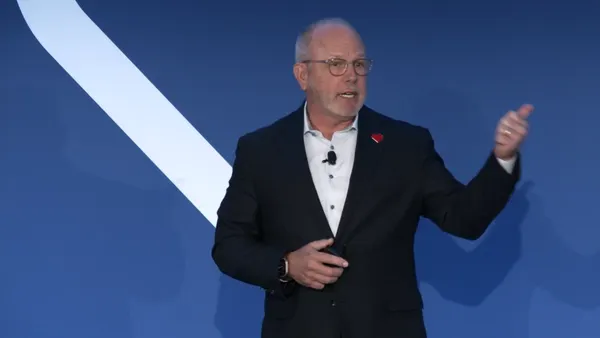Dive Brief:
- Times are getting better for the healthcare industry, which added 34,000 jobs in December of last year, including 16,000 in ambulatory healthcare services, 11,000 in nursing and residential care facilities and 7,000 hospital staffers. That follows the pattern set across all of 2014, when healthcare averaged 26,000 new jobs every month, compared to only 17,000 new jobs per month in 2013, all according to the monthly report from the Bureau of Labor Statistics.
- On the pay front, salaries were up .014%, which didn't mirror the dramatic growth of the workforce, but still suggests that healthcare institutions are becoming healthier.
- Meanwhile, US News & World Report announced Tuesday that the healthcare sector dominated their "Best Jobs of 2015" report, with dentists topping the list, followed closely by nurse practitioner. Physicians were rated the highest paying jobs for the year, as well.
Dive Insight:
Not only did healthcare job growth move in a healthy direction last year, it doesn't look like a flash in the pan. Employment growth in healthcare averaged a very respectable 26,000 per month in 2014 and 17,000 per month in 2013. What's even better is that hospitals are continuing to hire staff, adding 7,000 new jobs to their ranks during the month of December, according to recently-released data from the Bureau of Labor Statistics.
The hospital numbers closed out an encouraging year for the healthcare workforce, which grew in every major industry category, according to the BLS. Ambulatory healthcare services added 16,200 jobs, nursing care and residential care facilities added 12,100 jobs, home healthcare services added 4,200 jobs, outpatient centers added 3,800 jobs, and physician offices added 800 jobs.
The jobs production comes after the healthcare sector and hospitals in particular had been struggling to create new positions. In 2013, for example, hospitals did not create any new jobs.
For a time, there appeared to be a serious chasm between job production in states where Medicaid eligibility was expanded versus states that declined to participate in the expansion.
But Ani Turner of the Altarum Institute's Center for Sustainable Health Spending observed that that gap has been narrowing since last spring. Non-expansion states added healthcare jobs at a rate of 15,100 per month between April and October of last year, compared to 7,400 per month in the 12 months prior, according to Altarum. Expansion states added 21,100 per month between April and October last year, compared to 14,500 in the 12 months prior.
Still, Altarum's research suggests that if more states expand Medicaid eligibility, we could see a full-on healthcare hiring boom, especially by hospitals.













